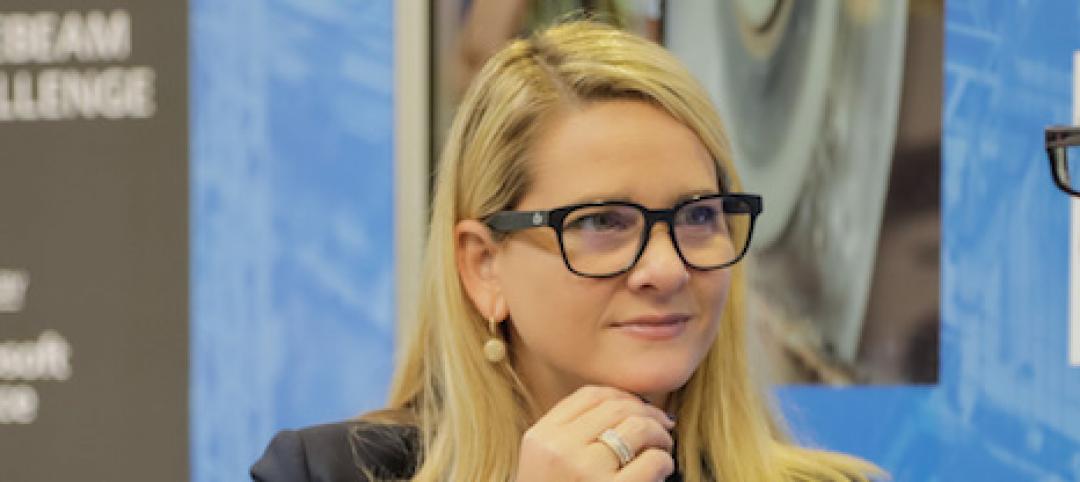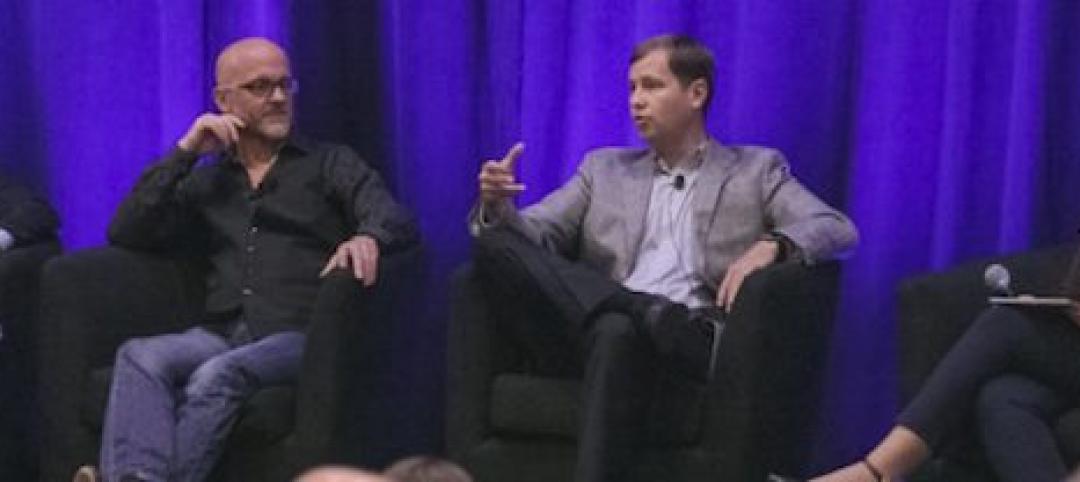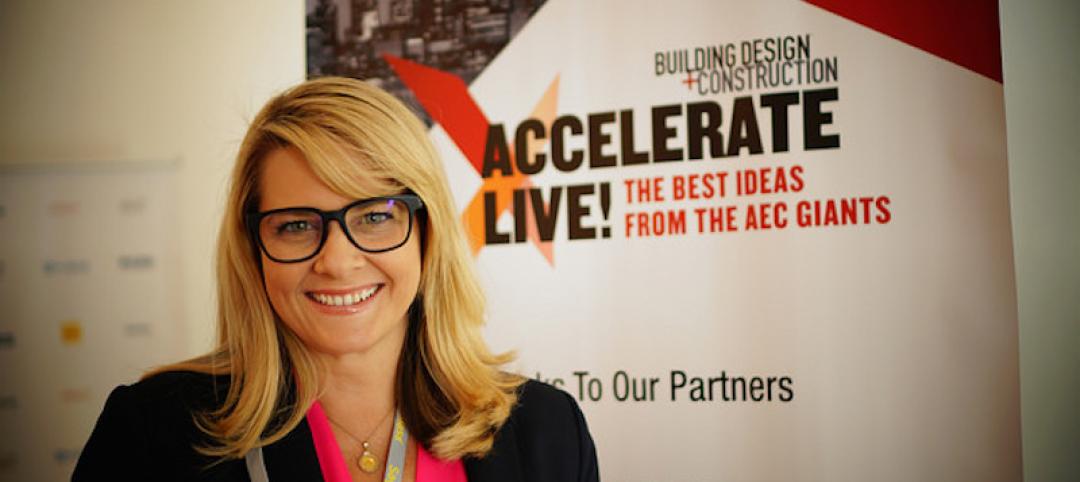For many executives in the design and building industry, finding the right talent to meet the demands of business is a challenge. For firms large and small, hiring is always a balancing act between keeping the business moving forward and being patient to find the right people to fit into your organization and take you where you want to go. Today within the AEC industry there is an even more critical issue known as “brain drain,” which is creating a looming cliff—or broadening “knowledge gap”—between experienced veterans of the industry and their less experienced counterparts.
Back in January, Rob Cassidy wrote the article The coming architect/engineer brain drain, or “Curse of the Baby Boomer”. In it Cassidy outlines some alarming statistics about the next generation of architects and engineers (or rather, the lack thereof), which most likely confirms what you are seeing and experiencing in your own organization. Adding complexity to the issue is the rapid adoption of technology aimed at making 3D design more efficient. Many engineering professors and senior designers I’ve talked to have expressed concern that while technology is improving the business process overall, they fear we are in danger of losing valuable fundamental knowledge in the process.
In an effort to find AEC leaders who could offer some insight on the issue, I spoke with former CEO of Parsons Brinckerhoff, George Pierson. I reached out to him after coming across his nomination as a Top 25 Newsmaker for 2014. What struck me about his nomination wasn’t the fact that he’d just taken Parsons Brinckerhoff through a very impressive acquisition of $1.35b in October 2014, but rather another notable milestone he’d reached in the spring of that same year: the successful completion of a project Pierson started, for both personal and professional reasons, four years earlier.
Back in 2010, Parsons Brinckerhoff and Pierson joined efforts to solve the brain drain issue by investing $250,000 to launch a program called the Engineering Success Alliance (ESA). Working with his alma mater, Bucknell University, Pierson set out to broaden the engineering and construction talent pool. The program is aimed at increasing the number of students in these fields while also addressing the lack of diversity within our top engineering programs by recruiting students from under-resourced high schools.
Believing that we need a workforce that reflects our communities, ESA is an invitation-only, four- year program for minority high school students who meet the standards of the top engineering schools. Focusing on math and science tutoring and peer and professional mentoring, including summer internships, the program aims to lessen the dropout rate for minority students. Prior to ESA’s involvement, the dropout rate for minority students was three times the national average. In the spring of 2014, Pierson was happy to report that the first graduating class saw a 30% increase in completion rates among minorities.
Reading Pierson’s story, I was surprised to learn that he was the first person in his family to go to college. Calling education his “passion,” he believes education has an impact on not only the person going to school, but also the families and generations that follow. This struck a chord with me as I am also the first person in my family to go to college and have experienced firsthand the impact it has had on my life. When I spoke with Pierson and asked him about his key motivators, he said, “You don’t sit back and reflect on key motivators— you think, what should I do? Being the first in my family to go to college, I am a big supporter of education. For many it means [a path to] social and financial stability.”
CNN interviewed Pierson for a piece called Missing: Minority scientist and engineers. The report shows just how under-represented minorities are in the Science, Technology, Engineering and Math (STEM) industries. Knowing how beneficial diverse perspectives are when collaborating to solve challenging issues, I couldn’t help but wonder how other AEC leaders felt about the topic. According to Pierson, executives involved in the program are all too aware that this is a national problem, and executives who participate in the program come away with “a disproportionate benefit compared with the students.” The future goals for the ESA include securing grant money by gathering statistical data in order to go to other schools and replicate the program.
Currently, 60 students are enrolled in the ESA program. Pierson was proud to report that two of the graduate students were hired by Parsons Brinckerhoff, with the other students going on to further their education or work for other well-known firms.
For more information on ESA or to get involved, click here: http://www.bucknell.edu/college-of-engineering/about-the-college/engineering-success-alliance.html
More from Author
Sasha Reed | Dec 15, 2017
Future vs. current state of construction innovation: How will we make the leap?
Looking beyond today’s constraints to the possibility of what “could be” is a key characteristic of those defining and delivering innovation to design and building firms across the globe.
Sasha Reed | Sep 19, 2017
BIM vs VDC…how the US and the UK differ in approaching digital project delivery
In this four-part series, Bluebeam VP Sasha Reed sat down with industry experts to examine the need for defining and understanding digital workflows and data management throughout the design and construction project lifecycle.
Sasha Reed | Jul 19, 2017
Introducing StrXur by Bluebeam
Our goal is to present unique perspectives you may not be able to find anywhere else.
Sasha Reed | Jul 13, 2017
Defining the future by mastering the art of change
From my perspective, what separates organizations thriving in the digital revolution from those who are not boils down to one thing: leadership.
Sasha Reed | Mar 15, 2017
Incentivizing change: Show me the money
Who is succeeding, and on what terms? And what will it take for everyone to experience the benefits of that success?
Sasha Reed | Oct 4, 2016
The talent shortage: Will the training the AEC industry desperately needs arrive in time?
As the construction industry bounces back from the Great Recession, an entirely new class of tech-savvy construction professionals has been created, and the supply of these highly skilled, tech-proficient pros has been quickly exhausted.
Sasha Reed | Jul 11, 2016
Construction Disruption at AECX: Technology, hackathons and the promise of change in LA
The lead up to AECX featured a discussion providing insight into the current state of the AEC technological revolution by exploring opportunities, challenges and choices AEC pros face.
Sasha Reed | Jun 23, 2016
Implementing Change: The Five Biggest Mistakes to Avoid
Two truths from the jobsite: 1) The best part about uncovering a problem is discovering its solution, and 2) The worst part about discovering the solution is implementing it.
Sasha Reed | Jun 9, 2016
With all these sharks in the water… (No Predictions Here...Part 2)
Rather than fighting to control the proliferation of apps, perhaps we should be training our eyes to look for signs of long-term viability among all the fins in the water
















